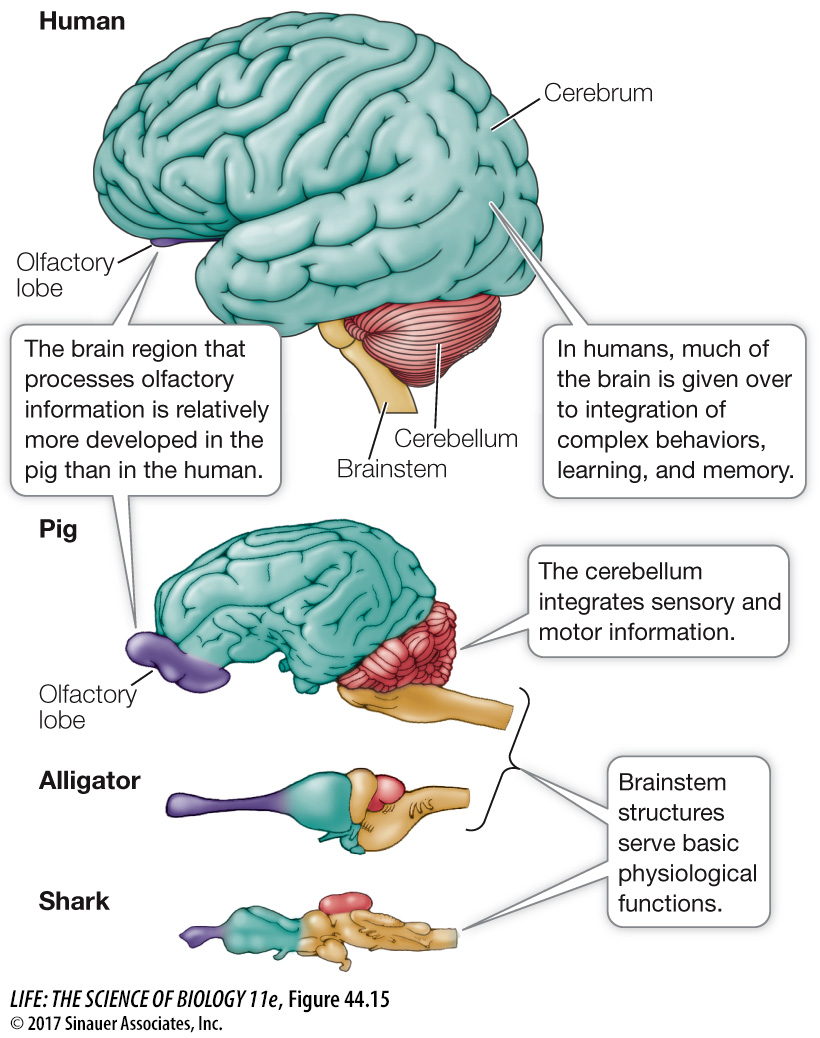The vertebrate brain is the seat of behavioral complexity
Vertebrates differ greatly in their behavioral complexity and in their physiological specializations, and their neural networks reflect this diversity. Figure 44.15 shows the brains of four vertebrate species of similar body mass drawn to the same scale.

Q: What sensory capability do you think is well developed in the pig?
The pig has a proportionally larger olfactory bulb than the human—
The human nervous system contains an estimated 1011 neurons. A given neuron in the brain can have 1,000 or more synapses. Thus the human brain can contain 1014 synapses (1011 neurons × 103 synapses per neuron). Then there are the glia. A single astrocyte might participate in 100,000 synapses while at the same time monitoring signals in the extracellular fluid and the blood. In addition, synapses are not constant but can be highly plastic. They can increase or decrease in number and size, and they can become more or less sensitive.
This astronomical number of neurons and synapses is divided into thousands of distinct but interacting networks that function in parallel. The possible number of informational networks in the brain is almost infinite, and therein lies the incredible ability of the human brain to process information, to learn, to do complex tasks, to remember, and to have emotions.